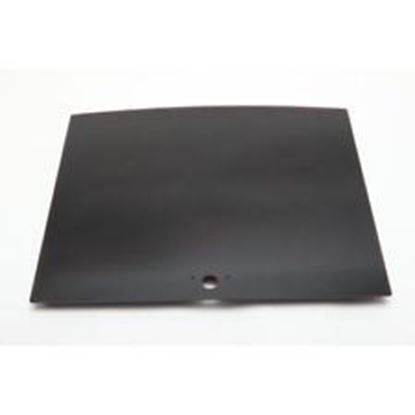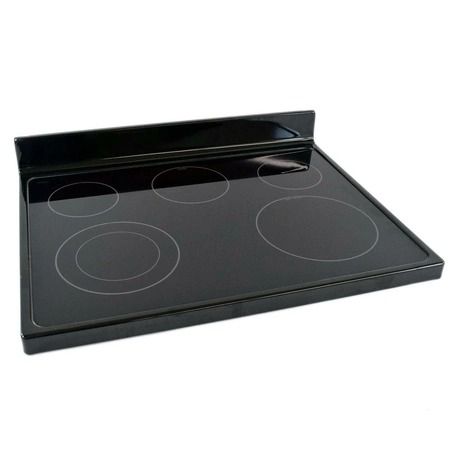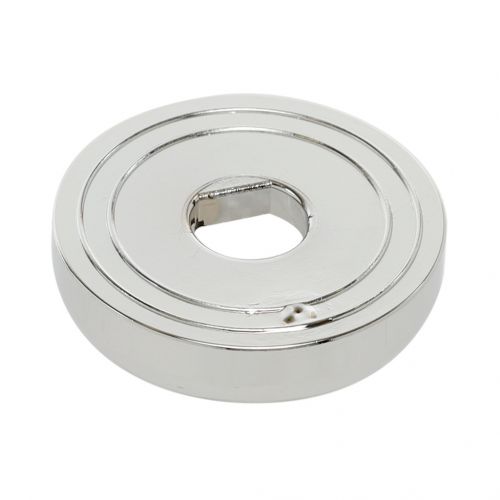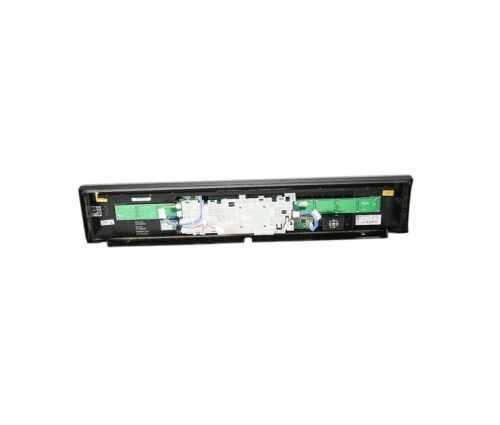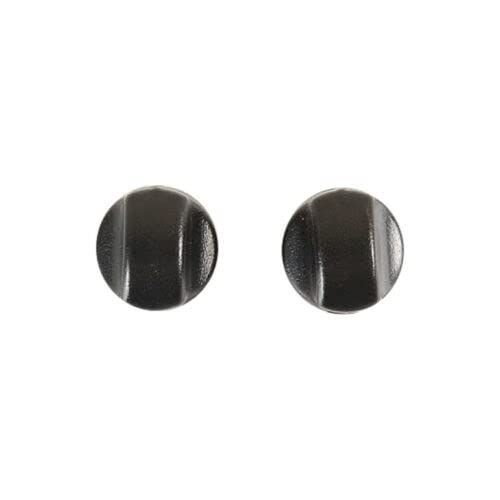
How to Clean Gas Stove Grates and Burners: Explore Now
Maintaining cleanliness in kitchen appliances is essential for ensuring efficient and safe cooking environments. Gas stove grates and burners are integral components of a kitchen, and their cleanliness directly impacts the efficiency and safety of cooking processes. In this guide, we will explore the importance of keeping gas stove grates and burners clean, as well as provide an overview of stove replacement parts and the significance of regular maintenance.
- Gas stove grates: Grates are sturdy, cast-iron or steel frames that provide stability and support for cookware on the gas stove. They are designed to withstand high heat and evenly distribute it across the base of pots and pans.
- Gas burners: Burners are the heat source of the gas stove. They consist of metal components that distribute and control the flow of gas to create flames for cooking. The burner heads emit flames that directly heat cookware placed on the grates.
| Table of contents Understanding gas stove grates and burners Why is cleaning gas stove grates and burners important? What you’ll need to clean gas stove grates and burners? How to clean gas stove burners? How to clean gas stove grates? Gas stove grates and burners maintenance tips |
Understanding gas stove grates and burners
Components and Functionality: Gas Stove Grates are the durable, elevated platforms on which pots and pans are placed for cooking. They ensure stability and even heat distribution. Grates typically have a series of bars or a solid surface to support cookware.
Gas Burners are the components that generate and distribute the flame for cooking. They consist of burner heads where the gas is ignited, producing controlled flames. The burner knobs regulate the gas flow, allowing users to adjust the heat intensity.
Common materials used in construction:
|
Gas Stove Grates |
Description |
|
Cast Iron |
Known for its durability and heat retention properties, cast iron grates are commonly used in gas stoves. |
|
Steel |
Steel grates are lighter than cast iron but still provide robust support for cookware. |
|
Porcelain-coated |
Grates coated with porcelain are resistant to rust and stains, making them easier to clean. |
|
Gas Burners |
Description |
|
Cast Aluminum |
Aluminum burners are lightweight, corrosion-resistant, and efficient in heat distribution. |
|
Brass |
Brass burners are sturdy, offer excellent heat conduction, and are resistant to corrosion. |
|
Stainless Steel |
Stainless steel burners are sturdy, simple to maintain, and rust-resistant, making them excellent for high-temperature cooking. |
Why is cleaning gas stove grates and burners important?
Cleaning gas stove burner grate is important for several reasons:
The buildup of grease, food particles, and debris: Over time, gas stove grates and burners can accumulate grease, food particles, and debris from cooking. This buildup can lead to unpleasant odors, create fire hazards, and promote the growth of harmful bacteria. Regular cleaning helps prevent these issues, maintaining a hygienic cooking environment.
Impact on cooking efficiency: Clean gas stove grates and burners directly contribute to the efficiency of the cooking process. When residues accumulate, they can block the pores of the burners, leading to uneven flames or clogs.
Efficient performance: Replacement grates for gas stoves provide efficient heat distribution and optimal gas flow, allowing for consistent and effective cooking. This prevents uneven heating and ensures that the burners operate at their full capacity, leading to better cooking results.
Hygiene: Cleaning these components helps eliminate food residues and bacteria that may accumulate over time. This promotes a hygienic cooking environment, reducing the risk of food contamination and odors.
Prevention of damage: Regular cleaning prevents the buildup of stubborn residues that can corrode and damage the grates and burners over time. This maintenance practice prolongs the lifespan of these components, reducing the need for premature replacements and repairs.
Refer: How to clean glass stove top
What you’ll need to clean gas stove grates and burners?
|
Cleaning Supplies |
Description |
|
Dish Soap or Degreaser |
A mild dish soap or a degreaser to help break down grease and food residues. |
|
Soft Bristle Brush or Sponge |
A soft-bristled brush or sponge that is safe for the material of your grates and burners to scrub away stubborn residue. |
|
Vinegar or Baking Soda |
White vinegar or baking soda can be used to help dissolve tough grime and carbon deposits. |
|
Plastic Bags or Containers |
Large plastic bags or containers big enough to soak the grates and burners in cleaning solutions. |
|
Gloves |
Rubber or protective gloves to safeguard your hands during the cleaning process. |
|
Hot Water |
Hot water for rinsing and loosening grime and residue. |
|
Microfiber Cloth or Towel |
A microfiber cloth or towel for drying the grates and burners after cleaning. |
How to clean gas stove burners?
When cleaning stove burners, follow these steps for effective results:
Remove the burners: Carefully detach the burners from the gas supply pipes. Depending on the stove model, this may involve simply lifting them off or unscrewing them.
Soak in soapy water: Fill a sink or basin with warm, soapy water. Submerge the burners and let them soak for 15-20 minutes to help loosen dirt and grease.
Scrubbing: Scrub the burners thoroughly using a sponge or soft-bristled brush to remove any remaining residue. For stubborn spots, you can use a paste of baking soda and water to help dissolve the grime.
Rinse and dry: Rinse the burners under running water to remove soap and debris. Ensure they are scorched before reattaching them to the gas supply.
Inspect and reassemble: Inspect the burners for any remaining dirt or blockages. If necessary, repeat the cleaning process. Once clean, reassemble the burners onto the stove.
Final touch: Before use, turn on the burners for a few minutes to burn off any residual soap or water. This step helps prevent sputtering when you first cook with the cleaned burners.
Checkout: Parts of a stove
How to clean gas stove grates?
Preparation and safety: Ensure that the gas stove grates are completely cool before starting the cleaning process. If the grates are removable, take them off the stove and place them on a flat surface for easy access.
Soaking stove grates in soapy water: Fill a sink or a large container with hot, soapy water. Submerge the gas stove grates in the soapy water and let them soak for at least 15-20 minutes. This soaking will help loosen the grease and food residue.
Scrubbing: After soaking, use a brush or sponge to scrub the grates thoroughly, focusing on areas with built-up grease or residue. For stubborn stains, you can apply a paste of baking soda and water and scrub with a brush to help dislodge the grime.
Rinse and dry: Rinse the grates under running water to remove the soap and debris. Once cleaned, use a dry cloth to wipe the grates, removing excess water.
Optional vinegar soak: For particularly stubborn residues or to further disinfect, you can soak the cleaned grates in a solution of equal parts water and vinegar for an additional 15-20 minutes.
Dry and reassemble: Ensure that the grates are completely dry before reassembling them on the gas stove. Dampness can lead to rust or corrosion, so the best way to clean stove grates is to dry them thoroughly.
Know more about: How much does a stove or oven cost?
Gas stove grates and burners maintenance tips
|
Maintenance tip |
Description |
|
Regular Cleaning |
Clean the gas stove grates and burners regularly after each use to prevent grease and food residue buildup. This practice will maintain their efficiency and prolong their lifespan. |
|
Soak and Scrub |
Periodically soak the grates and burners in warm, soapy water to loosen stubborn grime. Use a brush or sponge to scrub away any residues, ensuring thorough cleanliness. |
|
Avoid Harsh Cleaners |
Refrain from using abrasive cleaners or harsh chemicals that could damage the material of the grates and burners. Opt for mild dish soap or natural cleaning solutions for safe maintenance. |
|
Inspect for Damage |
Regularly inspect the grates and burners for signs of wear, cracks, or blockages. Burner replacement for gas stoves should be done promptly to avoid safety hazards and ensure efficient cooking. |
|
Maintain Proper Gas Flow |
Check the gas flow regularly to ensure burners receive an adequate supply. Clean any clogs or blockages in the burner ports to maintain consistent flame and cooking performance. |
|
Avoid Overheating |
Avoid overheating the burners excessively, as this can lead to discoloration and damage. Use the appropriate heat levels for your cooking needs to preserve the quality of the grates and burners. |
|
Dry Thoroughly |
After cleaning or soaking the grates and burners, ensure they are completely dry before reassembling them on the stove. Moisture can cause rust or corrosion, impacting their durability. |
Cleaning a clean gas stove and its components, such as grates and burners, not only improves the beauty of your kitchen but also guarantees that your appliances function optimally and last longer. By using the appropriate cleaning procedures and solutions, you can effortlessly remove grime, grease, and tenacious stains, leaving your gas stove grates and burners gleaming clean. Regular cleaning and care will not only make cooking a more enjoyable experience, but also help to a safer and more hygienic kitchen environment.
FAQs
What is the best way to clean cast iron stove grates?
To clean burnt cast iron stove grates, soak them in a solution of hot water and dish soap, then scrub them with a brush or sponge. For harder stains, make a paste with baking soda and water.
What is the best way to clean stove top burners?
Cleaning gas stove top burners is determined by the sort of mess. Warm water and dish soap make an excellent general cleaning solution. For harder stains, a cleaning specifically intended for gas stoves may be more successful.
How do you remove burn marks from stove grates?
To remove burn marks from stove grates, soak them in a combination.



